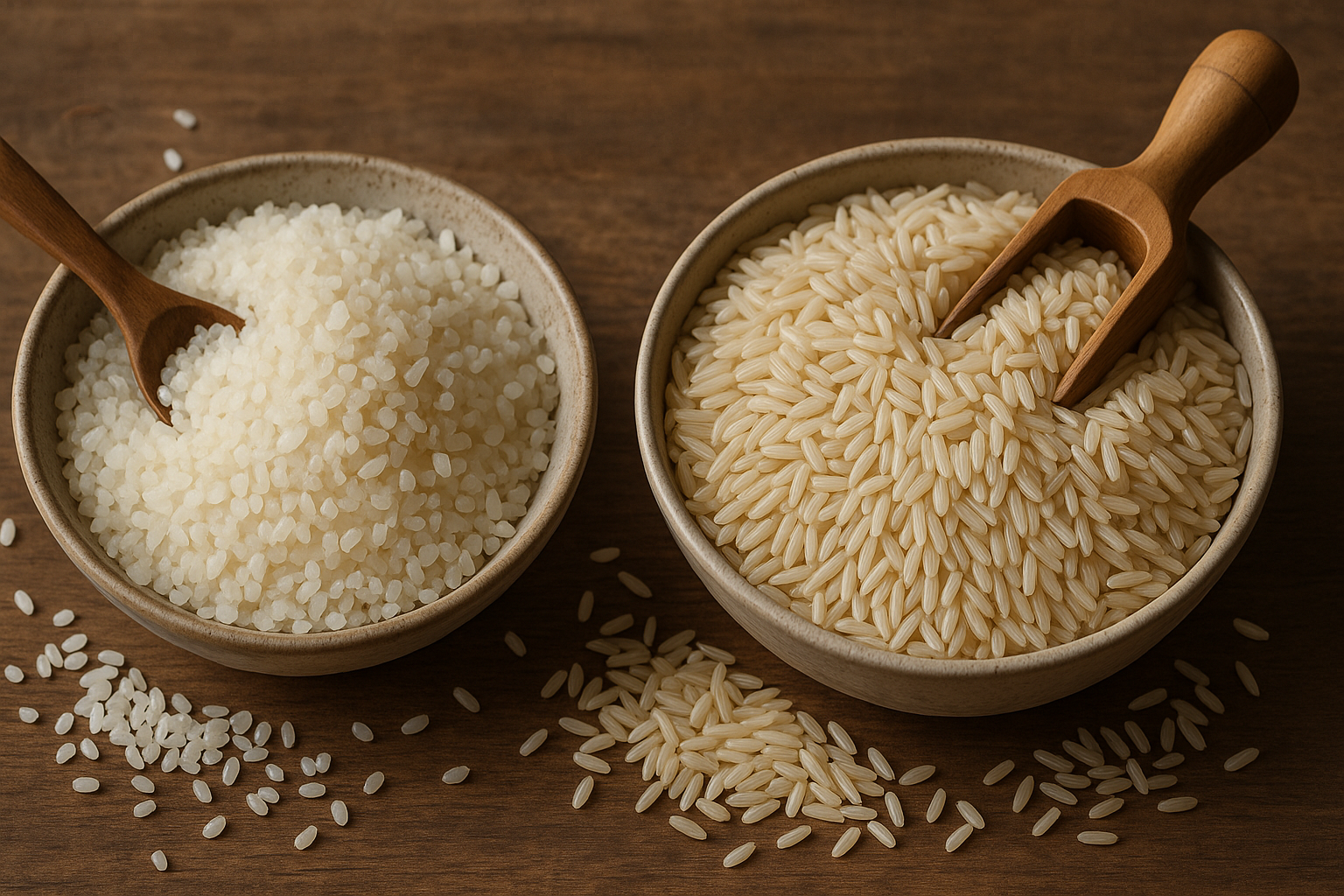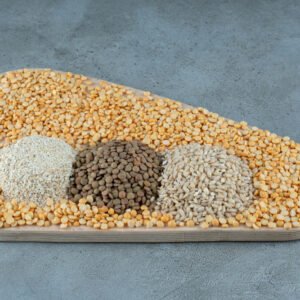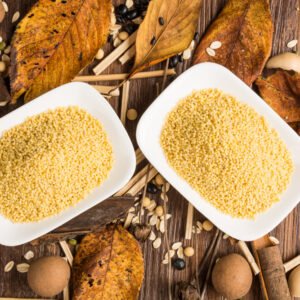Rice serves as a staple food for nearly two-thirds of the world’s population, making the choice between different rice types more important than ever. The debate between broken grain rice vs whole grain rice affects millions of consumers who want to make informed dietary decisions. Understanding the differences between these rice varieties can help you choose the option that best fits your nutritional needs, cooking preferences, and budget.
Let’s break it down to understand how these two rice types compare across various factors including nutrition, processing methods, cooking characteristics, and cost considerations.
What Is Broken Grain Rice?
Broken grain rice consists of rice kernels that have fractured during the milling process. Five different products can be produced from rough rice: hulls, bran, brown rice, whole kernel milled rice, and brokens. Brokens are separated into three categories based on descending size: second heads, screenings, and brewers.
This type of rice emerges as a natural byproduct of rice processing rather than a deliberate manufacturing choice. The broken pieces maintain the same nutritional profile as their whole counterparts but offer different cooking properties and textures.
Processing Methods for Broken Rice
At the mill, the harvested “rough rice” passes through sheller machines to remove the inedible hulls. This process yields brown rice with the bran layers surrounding the kernel still intact. During this mechanical process, some grains inevitably break, creating the broken rice category.
The breaking occurs during:
- Hull removal
- Polishing stages
- Transportation and handling
- Storage and packaging processes
Understanding Whole Grain Rice
Whole grain rice refers to rice varieties that retain all three parts of the grain: the bran, germ, and endosperm. Whole grain rice varieties contain the bran and germ, providing more of specific nutrients like fiber, protein, antioxidants, and certain vitamins and minerals.
Brown rice represents the most common type of whole grain rice available in markets worldwide. The intact structure preserves the grain’s natural nutritional content and provides distinct cooking characteristics.
Types of Whole Grain Rice
Popular whole grain rice varieties include:
- Brown rice (short, medium, and long grain)
- Black rice
- Red rice
- Wild rice varieties
- Forbidden rice
Nutritional Comparison: Broken Grain Rice vs Whole Grain Rice
The nutritional battle between broken grain rice vs whole grain rice reveals significant differences that can impact your health choices.
Whole Grain Rice Nutrition Benefits
Brown rice delivers more fiber, magnesium, potassium, iron, and certain B vitamins (B1, B3, B6, and B9) than white rice. These nutrients remain intact because the processing preserves the nutrient-rich bran and germ layers.
Key nutritional advantages include:
- Higher fiber content supports digestive health
- More protein per serving
- Rich in antioxidants that fight inflammation
- Contains essential minerals like magnesium and potassium
- Provides B vitamins for energy metabolism
Broken Rice Nutritional Profile
Broken rice typically undergoes similar processing as white rice, meaning it loses the bran and germ layers. This processing removes much of the fiber, vitamins, and minerals found in whole grain varieties.
Here is why broken rice still offers value:
- Quick energy from carbohydrates
- Easier digestion for sensitive stomachs
- Fortified varieties may contain added nutrients
- Lower fiber content suits certain dietary needs
Cooking Characteristics and Texture Differences
The physical differences between broken grain rice vs whole grain rice create distinct cooking experiences.
How Broken Rice Cooks
Due to the different size and shape of the grains, broken rice has a different, softer texture from “unbroken” rice, and absorbs flavors more easily. It cooks faster, using less fuel, and can be used to make rice porridges and congees, which need long cooking times.
Cooking advantages of broken rice:
- Faster cooking times save energy
- Softer texture appeals to many palates
- Absorbs spices and flavors readily
- Works well for creamy dishes
- Requires less water than whole grains
Whole Grain Rice Cooking Properties
You’ll need to cook whole-grain brown rice for longer, and it’ll still be chewier than white rice. The intact bran layer creates a protective barrier that extends cooking time but provides nutritional benefits.
Cooking characteristics include:
- Longer cooking times (45-60 minutes)
- Chewier, nuttier texture
- Requires more water for proper cooking
- Retains shape well in dishes
- Offers more complex flavors
Health Benefits and Considerations
When comparing broken grain rice vs whole grain rice from a health perspective, several factors come into play.
Whole Grain Health Advantages
Meta-analysis of 13 clinical trials found brown rice reduced weight, BMI and waist circumference when compared to white rice. Research consistently shows whole grain varieties offer superior health benefits.
Health benefits include:
- Better weight management support
- Lower glycemic index for blood sugar control
- Reduced risk of heart disease
- Improved digestive health from fiber
- Better satiety and appetite control
Digestibility Considerations
White rice is easier to digest, in part because it’s lower in fiber. This makes broken rice (typically processed like white rice) more suitable for certain individuals.
People who may benefit from broken rice:
- Those with digestive sensitivities
- Individuals recovering from illness
- People with inflammatory bowel conditions
- Athletes needing quick energy
- Children with texture preferences
Explore the different types of maize/corn and their unique uses, flavors, and health benefits.
Cost and Accessibility Factors
Economic considerations often influence the choice between broken grain rice vs whole grain rice.
Price Comparisons
Broken rice typically costs less than whole grain varieties because:
- It’s a byproduct of processing
- Shorter shelf life reduces storage costs
- Less specialized handling required
- Higher supply availability
Whole grain rice commands higher prices due to:
- More careful processing requirements
- Longer storage capabilities
- Growing health consciousness demand
- Premium positioning in markets
Availability Considerations
Broken rice enjoys widespread availability in many regions, especially in Asian markets where it’s commonly consumed. Whole grain varieties are increasingly available but may require specialty stores in some areas.
How CMS Industries Supports Quality Rice Distribution
CMS Industries plays a vital role in connecting consumers with high-quality agricultural products, including various rice varieties. As a leading agricultural products manufacturer and exporter based in Gujarat, India, CMS Industries understands the importance of providing both broken and whole grain rice options to meet diverse consumer needs.
The company’s commitment to quality control ensures that whether you choose broken grain rice or whole grain rice, you receive products that meet international standards. CMS Industries works directly with farmers across India to source premium rice varieties, supporting sustainable agricultural practices while delivering nutritious options to global markets.
Through their extensive distribution network, CMS Industries makes both traditional and specialty rice varieties accessible to consumers worldwide, helping bridge the gap between agricultural producers and health-conscious consumers seeking quality grain products.
Making Your Choice: Which Rice Type Suits You?
The decision between broken grain rice vs whole grain rice depends on your specific needs and preferences.
Choose broken rice if you:
- Want faster cooking times
- Prefer softer textures
- Need easier digestion
- Have budget constraints
- Enjoy creamy rice dishes
Choose whole grain rice if you:
- Prioritize nutritional density
- Want better satiety
- Prefer nutty, complex flavors
- Focus on weight management
- Have time for longer cooking
Environmental Impact Considerations
Both rice types have environmental implications worth considering. Whole grain rice processing requires less mechanical processing, potentially reducing energy consumption. Broken rice utilizes what might otherwise be waste, supporting food system efficiency.
Sustainable rice production practices, like those promoted by companies such as CMS Industries, focus on water conservation, soil health, and reduced chemical inputs regardless of the final product type.
Storage and Shelf Life Differences
Whole grain rice contains natural oils in the bran layer that can become rancid over time, giving it a shorter shelf life than processed varieties. Proper storage in cool, dry conditions extends freshness for both types.
Storage tips:
- Keep in airtight containers
- Store in cool, dry locations
- Use whole grain varieties within 6 months
- Broken rice can last longer when properly stored
- Consider refrigeration for extended storage
Conclusion
The choice between broken grain rice vs whole grain rice ultimately comes down to balancing nutritional goals, cooking preferences, budget considerations, and personal taste. Whole grain varieties offer superior nutritional profiles and health benefits, while broken rice provides convenience, affordability, and digestibility advantages.
Both options can fit into a healthy diet when consumed as part of balanced meals. Consider incorporating both varieties into your meal planning to enjoy the unique benefits each offers.
Ready to explore premium rice options for your kitchen? Connect with CMS Industries to discover their range of high-quality rice varieties sourced directly from Indian farmers and distributed globally with a commitment to quality and sustainability.
Frequently Asked Questions
Q1: Is broken rice less nutritious than whole grain rice?
Yes, broken rice is typically less nutritious than whole grain rice because it undergoes similar processing to white rice, removing the nutrient-rich bran and germ layers that contain fiber, vitamins, and minerals.
Q2: Does broken rice cook faster than whole grain rice?
Broken rice cooks significantly faster than whole grain rice, typically requiring 15-20 minutes compared to 45-60 minutes for brown rice, making it a convenient option for quick meals.
Q3: Can people with diabetes eat broken rice?
People with diabetes should consume broken rice in moderation as it has a higher glycemic index than whole grain varieties, potentially causing faster blood sugar spikes when eaten in large portions.
Q4: Which rice type is better for weight loss?
Whole grain rice is better for weight loss because it contains more fiber and protein, which help you feel full longer and may boost metabolism compared to broken rice varieties.
Q5: Is broken rice the same as white rice?
Broken rice is not the same as white rice, though both undergo similar processing. Broken rice consists of fractured kernels from the milling process, while white rice refers to polished whole kernels.





